Curaçao has a way of surprising people — it’s not overhyped, just quietly cool with its bright streets, clear water, and laid-back energy.
(Say it like this: Cure-uh-sow.)
Sitting just off the coast of Venezuela, this Dutch Caribbean island is part of the Kingdom of the Netherlands and stays out of the hurricane belt, which makes it a solid year-round option.
Willemstad, the capital, is split by a channel and connected by the Queen Emma Bridge — a floating pedestrian bridge that swings open for passing ships.
The city’s candy-colored buildings and cobblestone streets are reason enough to visit, but the history runs deeper: Indigenous Arawak roots, layers of colonization, and a complex legacy tied to the slave trade.
In 2024, Curaçao saw around 1.5 million visitors, with more than half arriving by cruise ship.
Those docking at the Mega Cruise Terminal are just steps from museums, shops, and photo-worthy architecture.
Others come in by air for the beaches — Cas Abao, Grote Knip, and the tucked-away Playa Lagun — or for diving the reefs and wrecks.
It’s the kind of place you can explore in flip-flops, learn something new, and still catch a beach sunset.
Warnings & Dangers in Curacao

OVERALL RISK: LOW
Curaçao is considered a low-risk destination for most travelers. Crime exists, but it's typically non-violent and can be avoided with standard precautions. Tourist areas are well-patrolled, and the island has a reputation for being laid-back and welcoming, especially compared to other Caribbean spots.

TRANSPORT & TAXIS RISK: MEDIUM
Transport risk is medium. Public transportation is limited and inconsistent, especially outside of Willemstad. Official taxis don’t use meters, so always agree on the fare first. Roads can be poorly lit at night, and some rental cars have been broken into at remote beaches.

PICKPOCKETS RISK: MEDIUM
Pickpocketing is a medium risk, but that's to be expected in any tourism-heavy spot. Use extra caution in busy areas, such as markets, festivals, and cruise port zones. Keep your bag zipped and your phone out of your back pocket. Most thefts here are crimes of opportunity, not elaborate schemes.

NATURAL DISASTERS RISK: LOW
Natural disaster risk is low thanks to Curaçao’s location below the hurricane belt. That said, short-term flooding during rainy months (October–January) can cause travel delays or make rural roads sketchy. Always check the local weather if you're headed out on a hike or dive trip.

MUGGING RISK: LOW
Tourists have reported isolated incidents, usually after dark or when walking alone in remote areas. However, the risk remains low. Avoid wandering at night in unlit areas, and don’t flash valuables — especially near isolated beaches or parking lots.

TERRORISM RISK: LOW
Terrorism risk in Curaçao is extremely low. There are no known threats or recent incidents targeting locals or travelers. The island’s political stability and strong ties to the Netherlands help keep this risk negligible.

SCAMS RISK: LOW
The scam risk is low but still present. Overcharging for tours, taxis, or beach access can happen, especially near cruise terminals. Be wary of anyone who approaches you unsolicited, offering a “deal.” Stick with licensed guides and double-check prices before you commit.

WOMEN TRAVELERS RISK: LOW
The island is generally safe for women, with a low risk depending on how and where you travel. Solo travelers should take the usual precautions at night and avoid isolated areas alone. We'll talk about family-friendly places versus the "party zones" in this article. Safety is better in family locations.

TAP WATER RISK: LOW
Curaçao’s tap water is safe to drink. It meets World Health Organization standards and is regularly tested, making this a low-risk concern. Many hotels and locals drink it without issue — no need to stock up on bottled water unless you just prefer it.
Safest Places to Visit in Curacao
Curacao’s tourism website is easy enough to find, curacao.com.
The FAQ section is robust and helpful.
The island’s capital, Willemstad, is a UNESCO World Heritage Site and one of the best places to start.
Stroll across the Queen Emma Bridge, check out the pastel Dutch colonial buildings in Punda and Otrobanda, and stop at the Kura Hulanda Museum for a powerful look at Afro-Caribbean history.
When it comes to beaches, head west.
Cas Abao and Grote Knip are two of the island’s best, both with turquoise water and calm surf that’s perfect for swimming or snorkeling.
Playa Lagun is smaller and more rugged, often with sea turtles just offshore.
If you’re into hiking, Christoffel National Park gives you trails with sweeping views and local wildlife.
For food and local flavor, stop by Plasa Bieu in Willemstad for traditional stews and fresh fish, or spend a few hours at Landhuis Chobolobo — yes, that’s where they make the blue Curaçao liqueur.
If you’re visiting on a cruise, most ships dock at the Mega Cruise Terminal, a short walk from downtown Willemstad.
You’ll have easy access to shops, museums, and restaurants.
Some shore excursions head straight to beaches or snorkeling spots, but you can also book a taxi or rental if you want to explore on your own.
Just watch the time — traffic near the port can slow down in the late afternoon.
Places to Avoid in Curacao
There aren’t any “no-go zones” in Curaçao, but that doesn’t mean you should let your guard down.
Government advisories recommend exercising caution in more isolated areas, including remote beaches, dive sites, and nature trails, particularly in areas without clear signage or regular foot traffic.
Theft and the occasional assault have been reported in these spots, often when valuables are left in vehicles or when visitors wander alone.
With a slight increase in car thefts recently, don’t leave keys in the car.
A quick heads-up: many of Curaçao’s beach resorts charge an entry fee if you’re not a guest, and some are entirely private.
Don’t assume every stretch of sand is open to the public.
If you’re looking for a family-friendly vibe, beaches like Playa Porto Mari and Cas Abao are well-kept, calm, and have facilities like restrooms, food stands, and shaded areas.
On the flip side, Mambo Beach is where you’ll find a livelier scene with music, bars, and more of a party crowd, especially on weekends and during cruise port days.
Safety Tips for Traveling to Curacao
- Curaçao’s police force is called Korps Politie Curaçao (KPC). They’re visible and responsive in tourist areas. For emergencies, dial 911. For non-urgent police matters, the number is 917. Most officers speak some English, but it helps to keep hotel or local contacts on speed dial, too.
- Curaçao follows Dutch law, which means that suspects can be held during investigations with the approval of a judge. There’s no bail system, so if you’re arrested, you’ll stay put until a ruling is made. Don’t assume you’ll “just pay a fine” — that’s not how it works here.
- Curaçao doesn’t get hit hard by hurricanes, but it’s still good to stay informed. Download the Caribbean Disaster Emergency Management Agency (CDEMA) app or follow @MeteoCuracao for local weather alerts. Hotels will usually brief you if anything’s brewing, but real-time updates are your best bet.
- You can drive with a U.S. license, and car rentals are readily available. Roads are generally in decent shape, but be prepared for aggressive drivers and confusing signage. Night driving isn’t ideal — lighting is poor in some areas. Use GPS and stay aware of scooters and wildlife.
- Curaçao’s drinking age is 18, but enforcement is loose. If you’re traveling with teens, keep an eye out, especially in bars or clubs. Drink responsibly, travel in pairs, and stick to well-lit areas at night. Tourist-heavy bars are usually safe, but don’t leave your drinks unattended.
- Most major U.S. carriers work here with international roaming, but it’s expensive. Save money by grabbing a local SIM card from Digicel or Flow at the airport or a convenience store. Wi-Fi is common at hotels and cafes if you’re not data-hungry.
- Serious medical care in Curaçao is decent, but limited. If you need advanced treatment, you’re often flown to Colombia, and you’ll pay unless your insurance covers evacuation. U.S. transfers can run up to $25,000. That’s why we strongly recommend reading our guide: How Safe Is Colombia for Travel?
- Most locals speak four languages — Papiamentu, Dutch, Spanish, and English — so you’ll get by. That said, signs are mainly in Dutch. If you’re heading off the tourist trail, Google Translate or a phrasebook will go a long way.
- Don’t touch the iguanas. They’re everywhere — sunbathing on rocks, hanging out near beach cafes — and while they look chill, don’t pet or feed them. Iguanas can bite and may carry salmonella. Admire them from a distance and leave the wildlife alone.
- Most beaches in Curaçao are calm, clear, and protected by reefs. You won’t often see surf flags, but that doesn’t mean conditions are always safe. Currents can be strong outside sheltered bays. Ask locals before snorkeling or diving, and don’t assume lifeguards are on duty — most beaches don’t have them.
So... How Safe Is Curacao Really?
Curaçao is one of the safest Caribbean destinations, and it has been for quite some time.
Crime rates are low, but not zero.
Common sense will go a long way here.
Even government advisories issued by countries like the United States, the United Kingdom, and Canada show a risk level of Level 1: Exercise Standard Precautions.
That’s about as low as it can go.
With the added bonus of being out of the Atlantic Hurricane Zone, the only real challenge from June through November would be navigating delays or route changes when traveling through the zone.
The typical risks—sunburn, ocean currents, marine life, petty theft after dark, drinking too much—are still there, but there’s a reason to breathe a sigh of relief when visiting Curacao.
How Does Curacao Compare?
| Country | Safety Index |
|---|---|
| Curacao | 80 |
| Djibouti | 38 |
| Croatia | 83 |
| Mexico | 65 |
| France | 64 |
| Puerto Rico | 34 |
| Somalia | 16 |
| United Kingdom | 77 |
| Peru | 50 |
Useful Information

Visas
U.S. and Canadian travelers don’t need a visa to visit Curaçao for up to 90 days, but you do need to fill out the Digital Immigration Card online before arrival. Bring a valid passport with at least one blank page and a return or onward ticket. Yes, they check.

Currency
Curaçao uses the Netherlands Antillean guilder (ANG), but U.S. dollars are widely accepted— even taxi fares are usually quoted in USD. Feel free to use credit cards, but it’s smart to carry a little cash for small purchases, especially at local markets or beach bars.

Weather
Warm, dry, and breezy — Curaçao dodges most hurricanes thanks to its southern Caribbean spot. Expect temps in the 80s year-round, with September and October being the hottest and most humid. The rainy season is minimal, but passing showers can hit between October and January.

Airports
Curaçao International Airport (CUR) is the main gateway and is well-connected to major U.S., Dutch, and Caribbean cities. It’s modern, easy to navigate, and has decent food and Wi-Fi. Taxis and rental cars are available right outside, but rideshare apps aren’t a thing here yet. Curaçao has two cruise terminals: the Mega Cruise Terminal and Mathey Wharf.

Travel Insurance
While not required, travel insurance is a smart choice, especially with hurricanes that can impact your route, flight delays, or any snorkeling injuries that may occur. Make sure your policy includes medical coverage and emergency evacuation. Curaçao’s healthcare is good, but paying out-of-pocket without coverage can get expensive quickly.
Curacao Weather Averages (Temperatures)
Average High/Low Temperature
| Temperature / Month | Jan | Feb | Mar | Apr | May | Jun | Jul | Aug | Sep | Oct | Nov | Dec |
|---|---|---|---|---|---|---|---|---|---|---|---|---|
| High °C |
30 | 30 | 31 | 31 | 32 | 32 | 32 | 33 | 33 | 32 | 31 | 31 |
| Low °C |
24 | 24 | 25 | 26 | 26 | 27 | 26 | 27 | 27 | 26 | 26 | 25 |
| High °F |
86 | 86 | 88 | 88 | 90 | 90 | 90 | 91 | 91 | 90 | 88 | 88 |
| Low °F |
75 | 75 | 77 | 79 | 79 | 81 | 79 | 81 | 81 | 79 | 79 | 77 |
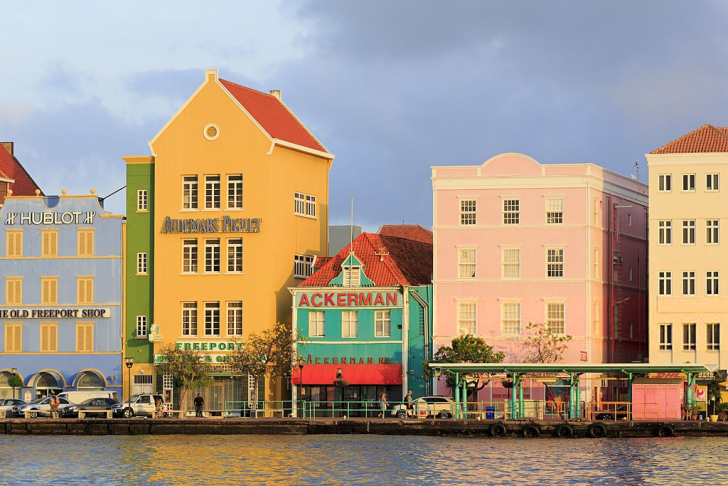
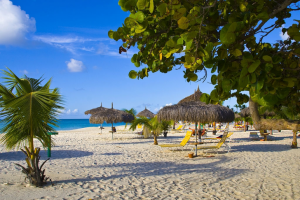
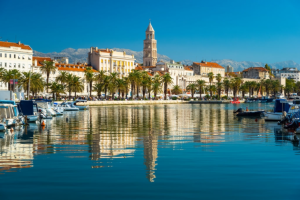
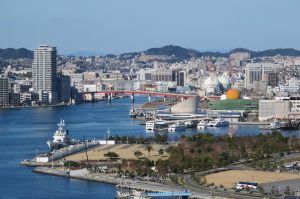

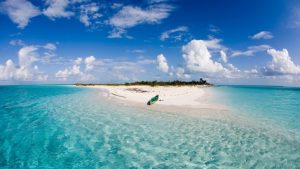
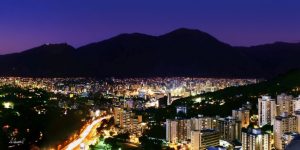
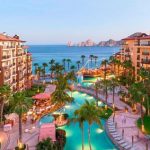
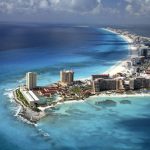
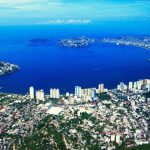
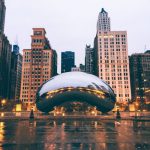
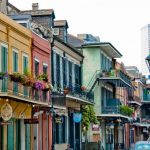
It's great!
Having been to Curacao over 15 years ago with family, I was curious to see if it was still a safe place to visit. You always hear about travel precautions and I just wasn’t sure. My brother and I are hoping to visit Curacao next fall. Looking forward to it. Thanks for the information!
My favorite
Do not hesitate to visit Curacao! I was able to go thanks to a cancellation in my friend’s family and it is absolutely amazing. I did not feel unsafe, not once. We even did a bit of sightseeing at night and everyone was extremely friendly. I loved seeing the different colored architecture and buildings. I will go back sometime in the future with my wife and kids when they are a bit older.
This is a gem
Very safe and quite the gem this is. The prices are ok and there aren’t many threats like in other places. Not many tourists so it’s not crowded and they have a lot of very nice beaches so you can get a proper tan. Kenepa Beach or Cas Abao are really great. As for food make sure to try the Poke Food Station.
One of the best island experiences so far
If you plan to rent a car for your stay – which makes moving around the island so much easier – do not leave anything in the car, regardless how safe you might think the neighborhood might be. You could also opt for hotel shuttles but they don’t cover that much ground so you won’t get to see all that Curacao has to offer. Quick trips won’t set you back by much but if you want to go on a longer tour you will have to spend quite a lot since most taxis aren’t metered. I never jump in without asking for an estimate first. We rented a car for the whole stay – 7 days – which cost around $350, and would do the same again.
Also, they don’t take kindly to drinking and driving so just don’t do it.
I’ve heard people saying that the west side of the island is not that safe for tourists but tbh, never went there so I have no idea.
You could also book a stay via Airbnb, as I discovered after we booked. They have options ranging from apartments that are perfect for families traveling with kids to beach villas.
Treat this destination just as you would normally do: avoid having your valuables in sight while doing your best to avoid poorly lit areas. I never felt unsafe during our whole stay and we’ve explored quite a bit, we’re not the stay all day in the sun and lounge kind of people.
There’s ton of outdoor activities from snorkeling to ATV rides, hill climbing. Their flora is beyond insane, so many flowers and lush greens all around. However tempting it might be, leave it alone or you will end up being ticketed.
Do your research, find an itinerary and activities suited for your age and range of hobbies. I guarantee you will have a blast!